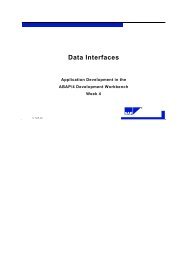business continuity institute good practice guidelines 2007
business continuity institute good practice guidelines 2007
business continuity institute good practice guidelines 2007
You also want an ePaper? Increase the reach of your titles
YUMPU automatically turns print PDFs into web optimized ePapers that Google loves.
Page 6<br />
Business Continuity Management GOOD PRACTICE GUIDELINES <strong>2007</strong><br />
Reference: BS 2999-1 Section 6<br />
General Principles<br />
UNDERSTANDING THE ORGANISATION<br />
As described in the section on BCM Policy step, the organisation must make a clear decision on<br />
whether the BCM will cover the whole organisation or just certain products or services. This<br />
sets the scope of the Business Impact Analysis (BIA) and Risk Assessment (RA) steps.<br />
• The tools for understanding your <strong>business</strong> for <strong>business</strong> <strong>continuity</strong> purposes are:<br />
• Business Impact Analysis (BIA) - a mandatory process for evaluating the impact over time<br />
of a disruption to an organisation’s ability to operate<br />
• Continuiity Recovery Requirements analysis - to estimate the resources and facilities and<br />
services that each activity will require at resumption<br />
• Risk Assessment (RA) - to estimate the likelihood and impact on specific functions from<br />
known threats<br />
The BIA identifies the urgency of each <strong>business</strong> activity undertaken by the organisation by<br />
assessing the impact over time of an interruption to this activity on the delivery of products and<br />
services. This information is used to identify the timescale of appropriate <strong>continuity</strong> and<br />
resumption strategies for each activity individually and in relation to one another.<br />
The Continuity Requirements Analysis provides the information that will allow the scale (size<br />
and numbers) of the appropriate <strong>continuity</strong> measures to be determined.<br />
Risk Assessment (RA) activity helps in identifying potential causes of interruption to an<br />
organisation, the probability of occurrence and impact of the threat being realised. Measures<br />
can then be identified that attempt to reduce the probability of occurrence or reduce the<br />
impact of an incident arising from these specific threats. Within the BCM programme, a RA<br />
should focus on the specific technologies and inherent risks of the <strong>business</strong> activities identified<br />
as most urgent in the BIA results rather than on all risks to the organisation.<br />
Version <strong>2007</strong>.2 15th March <strong>2007</strong> © The Business Continuity Institute <strong>2007</strong>
















